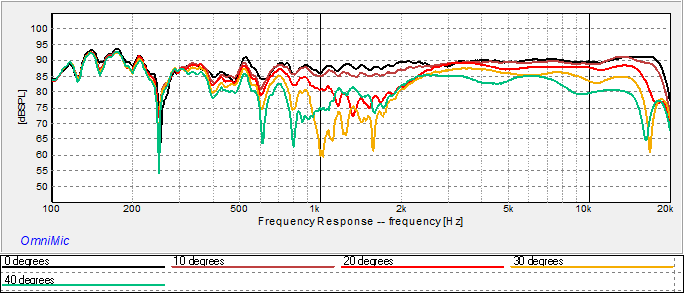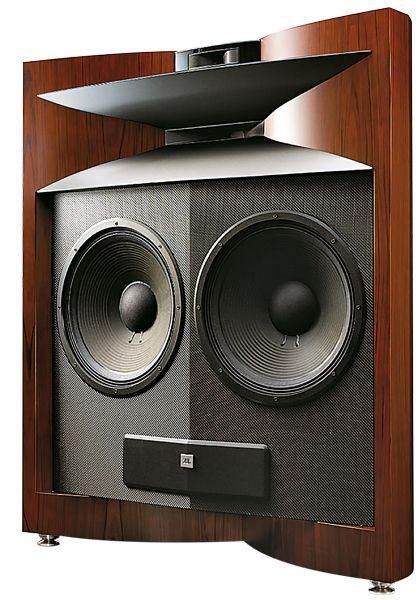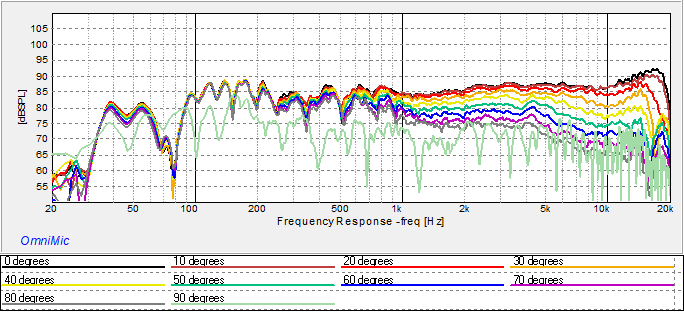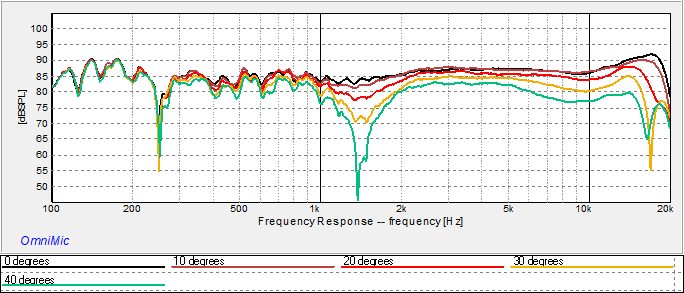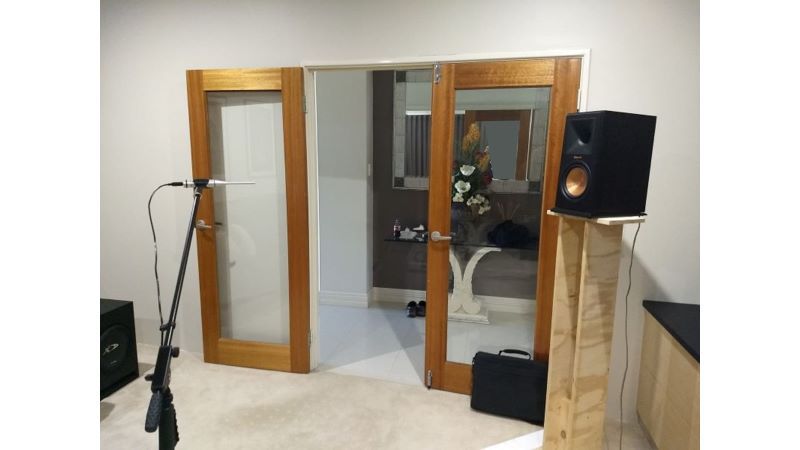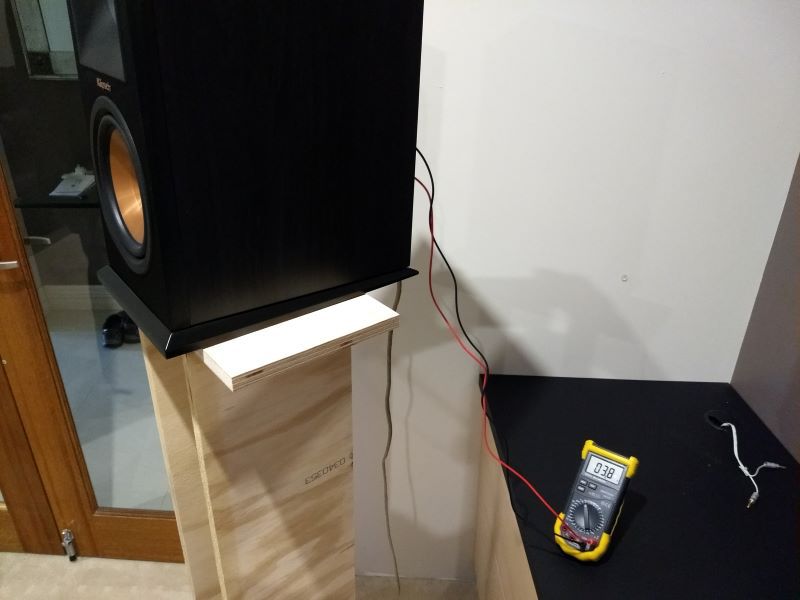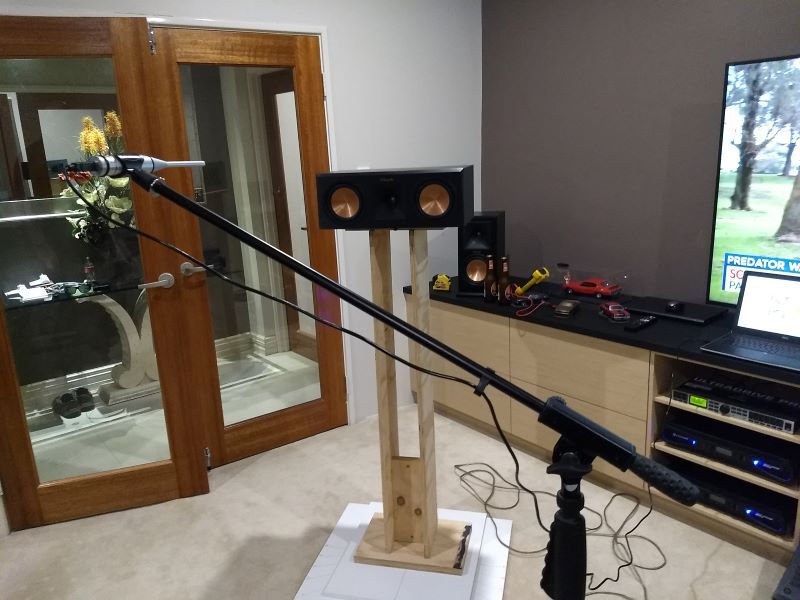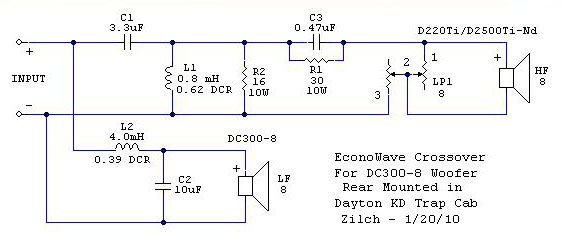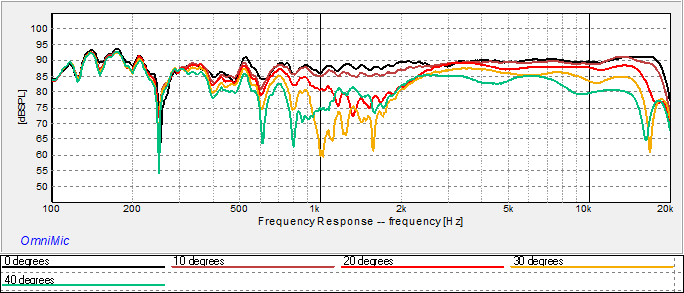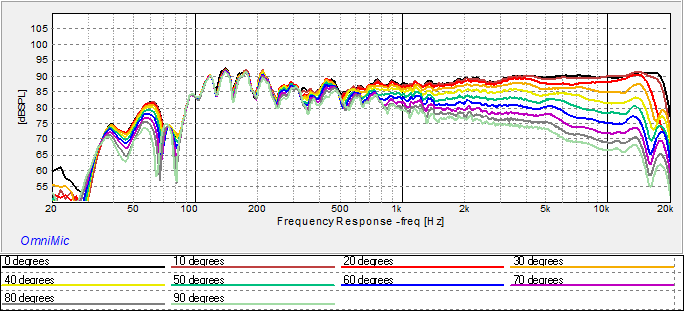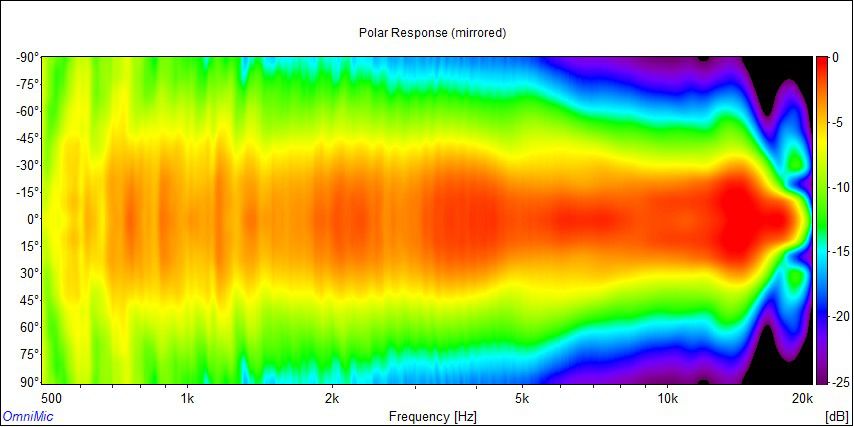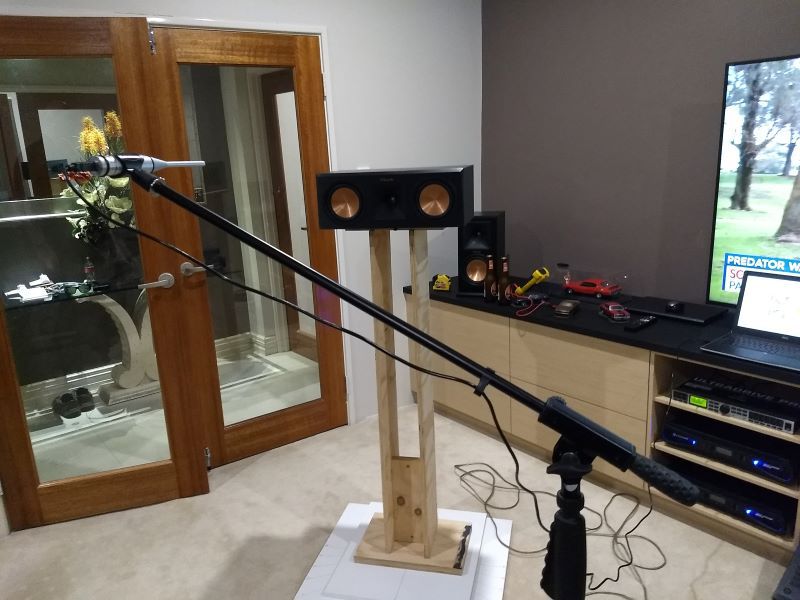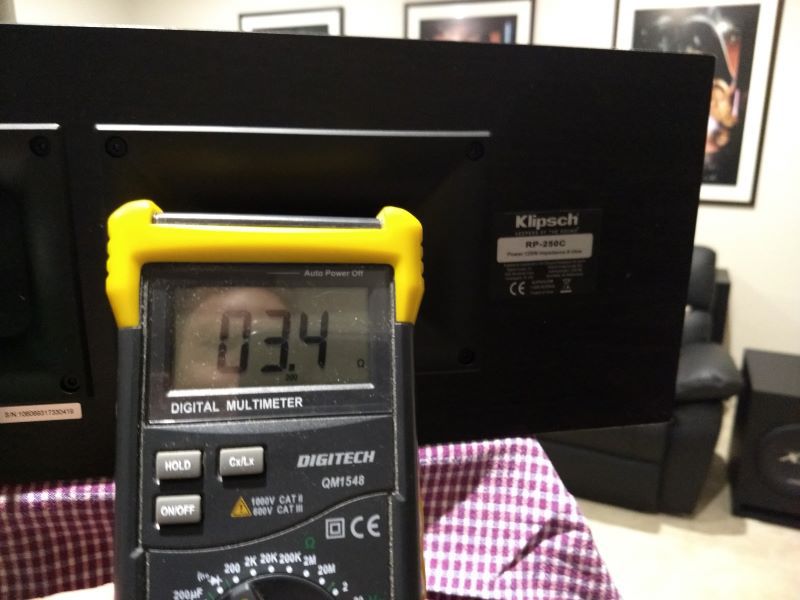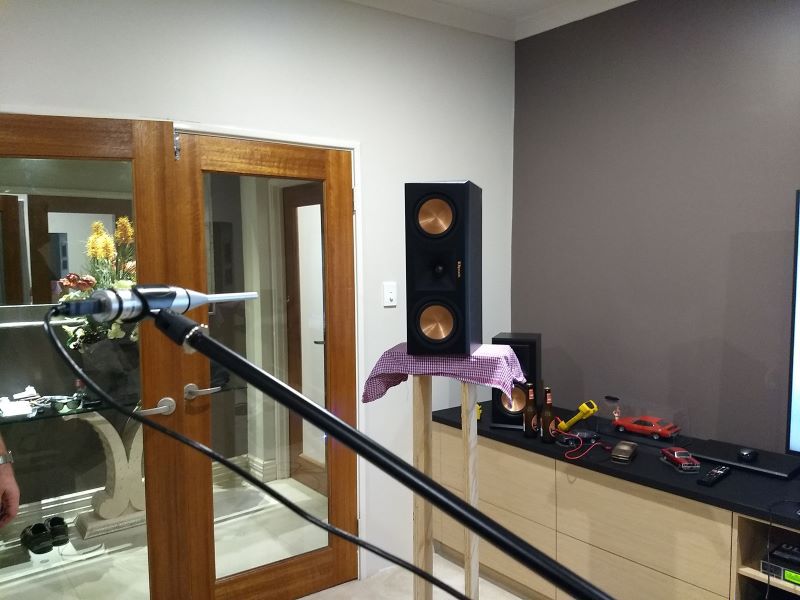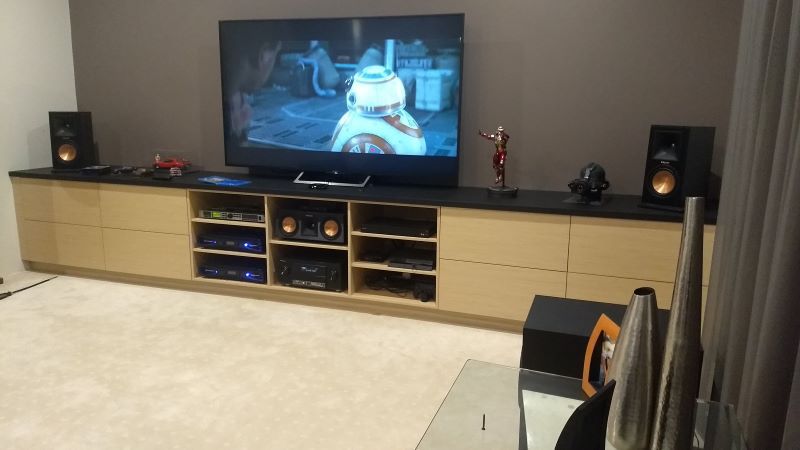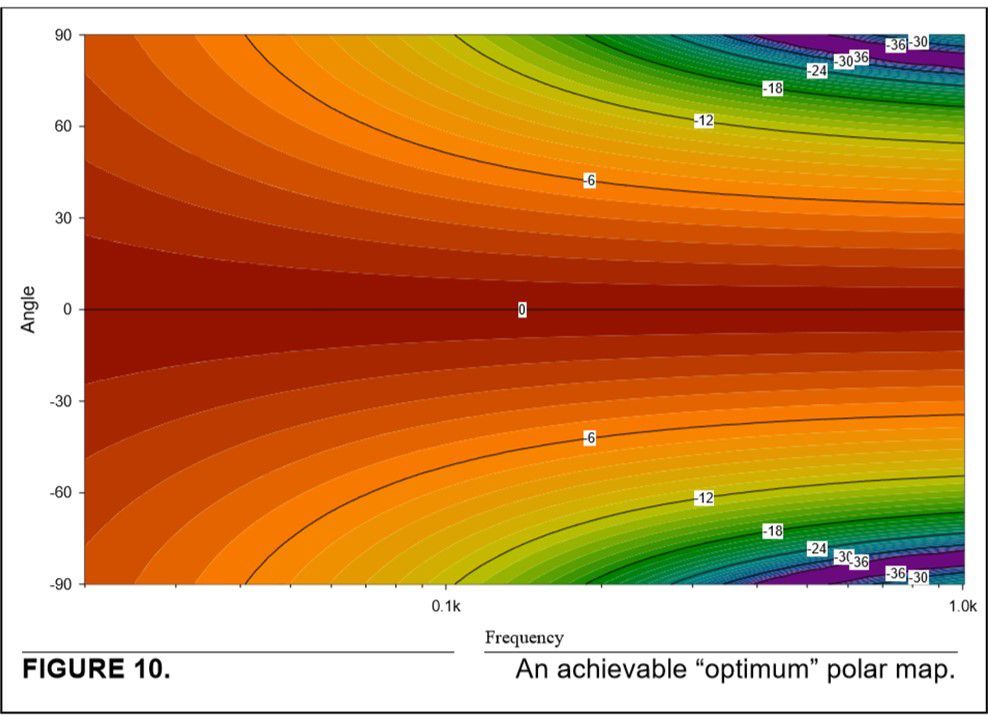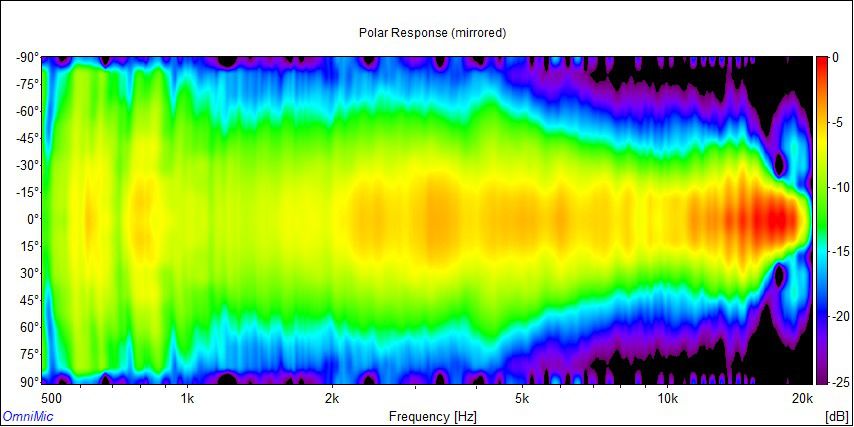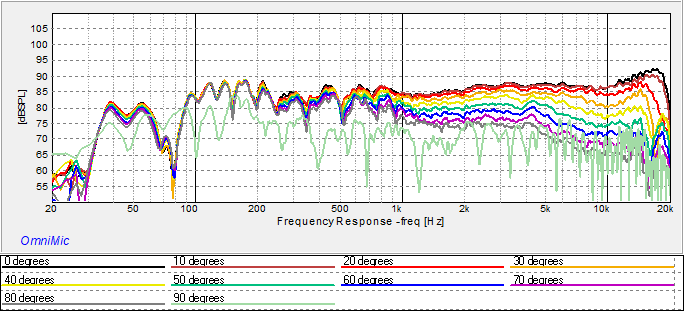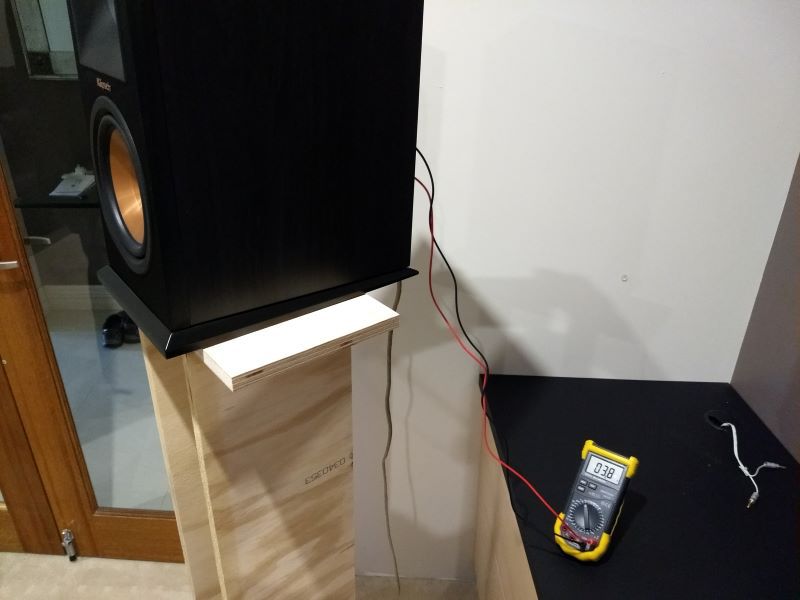-
Posts
102 -
Joined
-
Last visited
Content Type
Forums
Events
Gallery
Everything posted by Maz4bz
-
If I may I'd like to suggest you orientate your drivers like this: Or kind a-like this.... 😉 Ideally you'd also roll off one woofer using a 2.5 way crossover to avoid the off axis cancelations you get from a 2 way like we showed happens with a "normal" horizontal center channel. A two way will probably work ok straight ahead, but the response off-axis will likely be negatively impacted like this.... The 2.5way crossover worked wonders with my KG 5.5's - think big-center-channel with two woofers but standing up rather than lying on its side. 🧐 Good luck! 🍻
-
How to create your own frequency and impedance files for X-Sim
Maz4bz replied to MechEngVic's topic in Technical/Restorations
Love your work MechEngVic! Tracing is certainly one way of creating your own frequency and impedance files for X-Sim (or other tools). The other way is to get a mic and a DATS/Woofer tester and make your own. Relative to the cost of building/modding a system, getting the gear to actually measure is usually a small investment. For all the effort you'll go to - tracing, simulating and building - getting the measurement gear means you'll be able to validate what you've done has actually worked in the end. The key for me is setting the forward lobe - where the drivers sum on the vertical axis - is the hard part. This can only be done (as far as I'm aware) by actually measuring your drivers in the enclosure you have your drivers loaded into. Please don't take this the wrong way, what you've suggested is precisely how I got started. What it left me wanting was measurement data for my own built creations because I always was left wondering "how does that actually measure?". Keep up the great work! 🍻 -
Back of KG 4.2 Vibrates unless held with pressure
Maz4bz replied to biver's topic in Technical/Restorations
Post some pictures of your cabinets, you're bound to get some great feedback here. Cheers.- 8 replies
-
- cabinet repair
- vibration
-
(and 1 more)
Tagged with:
-
Given the investment need to build a system from scratch I'd like to highly recommend getting a DATS or woofer tester so that you can know for certain the specs of your drivers. I've been regularly surprised at how far off manufacturers specs can be from unit to unit. Good luck with your build.
-
Back of KG 4.2 Vibrates unless held with pressure
Maz4bz replied to biver's topic in Technical/Restorations
Hi Biver, I have a nice pair of KG 5.5's that came with zero bracing so that image is of my speakers. I've never had the pleasure seeing or hearing any KG 4.2's so I am assuming that these have no bracing like mine. There's quite a bit written about this out there. Here's an article in Stereophile you may find of interest on the topic... https://www.stereophile.com/features/806/index.html JBL have a tool called an interferometer for measuring cabinet deformation. This image is lifted from their M2 page on JBL Professional... Good luck!- 8 replies
-
- cabinet repair
- vibration
-
(and 1 more)
Tagged with:
-
Back of KG 4.2 Vibrates unless held with pressure
Maz4bz replied to biver's topic in Technical/Restorations
This is common for KG's. Others have completely removed the rear panel by gently knocking on the inside of that rear panel all the way around the edges with a rubber mallet until it completely comes free. Then reglue once all your old glue is removed. I would highly recommend some shelf or other front to rear, side to side bracing while you are at it. Good luck!- 8 replies
-
- 1
-

-
- cabinet repair
- vibration
-
(and 1 more)
Tagged with:
-
If you can get your hands on a measurement mic and measure the drivers in the enclosure without crossovers then you can post the measured response and you can get help here to address the top end balance. I had similar issues with my KG 5.5's so you may get some ideas looking at what I did there. Good luck and enjoy!
-
The dip in the 1-2khz range would most likely be effectively dealt with by lowering the tweeter output to the same level. That could be as simple as a resistor or two in the tweeter circuit. To do this change the right way I'd need to measure both drivers without the crossover in place and then model the existing crossover in XSim as a baseline. From there it is a simple process to iterate some changes in the crossover schematic to see what works. This is the approach I took for improving my KG 5.5's. My friend that owns these has challenged me to do this for him. Perhaps I will someday.
- 88 replies
-
- 1
-

-
- reference premiere
- bookshelf
-
(and 2 more)
Tagged with:
-
I'm intrigued that you'd want to mess with the crossover of these to bring them alive. These speakers already sound alive to me - they are just a little hot on the top end. Don't get me wrong, I really like these speakers alot. Horizontal measurements.... If I were to do anything with these I'd try to drop the output of the tweeter a little to bring up the bass in the mix. To do this accurately and retain the very nice off axis response you'd need to have good measurement gear and off axis measurements. I use a DIY turn table with 10 degree markings and Omnimic/Dats. RP-250C pictured on turn table... Vertical measurements of 160M (above/below) tweeter.... Measured resistance.... Keep up the experimenting and enjoy!
- 88 replies
-
- 1
-

-
- reference premiere
- bookshelf
-
(and 2 more)
Tagged with:
-
The folly of a horizontal centre channel speaker.
-
Forte design - with DH1As? Need some brain power.
Maz4bz replied to iaRIVR's topic in Technical/Restorations
I think the first step is to buy yourself a measurement rig like Omnimic and measure the Fortes first to establish a baseline. Then make incremental changes and measure each change to quantify what your are doing. It's good to trust your ears but they can't tell you everything that is changing. You can change anything you want but splicing drivers, cabinets and crossovers I could not recommend without measurements. Speakers are called systems because the drivers position within the cabinet and their relationship to each other and the cabinet combine to create the sound you hear. The crossover is designed to tie this system of parts into a corherent whole. On that basis if you change the Fortes drivers, their position in relation to each other in the cabinet or the width of the cabinet the crossover will need to change. As I read down your list of changes I kept thinking - I'd need measurements to make that work, except for your first suggestion. I've not heard the Fortes but they are iconic. If you need to change up the Fortes that much I'd be inclined to sell them and build a proven DIY design that meets you design/listening goals. I'm all for improving speakers, my KG 5.5's have been a joy to update. But I simply could not have achieved much meaningful without measurements. But what ever you do, enjoy! -
Main Speaker Positioning Trials and Tribulations.....
Maz4bz replied to ACV92's topic in 2-Channel Home Audio
I'm sure the RF-7's will be wonderful. I'd really love to get my measuring gear on the a pair to quantify the actual differences between the double 10" woofer Klipsch models. I just wish they'd set them up as 2.5way for the performance benefits of this! They must be a winning combo for klipsch or they wouldn't have been in their line for so long. -
Main Speaker Positioning Trials and Tribulations.....
Maz4bz replied to ACV92's topic in 2-Channel Home Audio
They can be with some easy upgrades... -
Hi Dkals, Those KG's look like they're in fab condition. These are a highly upgradeable system and can particularly benefit from some crossover enhancements. I've gone all out on mine which I've documented here.... Let us know how you get on if you make any further changes.
-
KG 5.5's are a very capable system with lots of upgradeability..... Listening to some old skool Icehouse on them now as I tap this out, they are so smooth and have a rich bass. They are my reference system.
-
Heresy as Center? On its side. Horizontal or Vertical mid/tweet?
Maz4bz replied to efzauner's topic in Technical/Restorations
Keep it vertical or your off axis response suffers a lot (i.e. for anybody not sitting right in front of the centre speaker)….. https://www.hometheatershack.com/forums/home-theater-design-construction/175510-kind-unusual-setup-3.html#post1615066 Traditional centre channel speakers are even worse.... The folly of a horizontal centre channel speaker - RP-250C measurements -
Nice job George! Love the finish. So glad my KG 5.5 update ramblings have been of some value. Please post more photos. I'd really like to see how you laid out the crossover. Cheers
-
The tweeter has a third order or 18db high pass filter which is created by C1, C2 and L1 in combination. Horn compensation when a compression driver is used is a little different and is usually formed by a capacitor and resistor in parallel. See here the Econowave crossover design by Zilch. In this design the compensation is formed by C3 & R1 for the Selenium D220 on the Econowave guide... Wayne Parham's white paper "Speaker motors and passive crossover filters" explains this well, certainly better than I can. In this case the KLF/KG and many other Klipsch horns front a dome tweeter which may explain why these don't require compensation - but I could be wrong in saying this. As I understand horns it is the constant directivity that causes the 6db decline in output which is why I was surprised the KG horn performed so well without compensation. The breakpoint or cutoff frequency or crossover frequency (Fc), if I'm correct in understanding your use of breakpoint can't really be changed without requiring a complete redesign of the entire crossover. Altering C1 affects the filter Fc on the tweeter, which will impact on the summed response of the tweeter and woofer, thereby requiring a subsequent tweaking of the woofer circuit. As I mentioned previously in this thread any changes to the crossover filter design is unlikely to yield satisfactory results without the actual KLF-10 driver frequency and impedance measurements. "Can anyone explain HF Compensation and the need for it?" Why not have a play with your CF-3's and see if you like what you hear? You can reverse it if you don't like it. Better yet get a measurement mic and see what you hear!
-
Hi Chris, Thanks for your insights. No, I have not yet listened to a MEH. I sure am keen to try one, this SEOS based design from the master BWaslo sure is intriguing. How's that polar pattern! I would have thought the quad woofer arrangement is going to have both vertical and horizonal pattern problems? Cheers!
-
Wow, that is one slick website you have there! Impressive. A few design questions... When you say ALK designed these specifically for you, May I assume then by this you mean that he has the same speaker enclosure/drivers/horns on hand and he has measured like this: For a three-way, measure the following (keeping the microphone position, the baffle position, and the levels the same for all measurements -- WITH phase response included): Tweeter response Tweeter + Midrange response (both together, no crossover) Midrange response Midrange + Woofer response (both together) Woofer response Would it be possible for you to post the crossover schematic so others might also build this system too please? Again, super keen to see final response measurements! Cheers.
-
I've read with interest about the Eminence neo woofers in some of the nice DIY Sound Group designs. Unfortunately Eminence is very expensive in Aus. About that crossover - its a generic design right? Given how much you are investing here I'd be very interested in the measured response once all built up. Good luck!
-
Great work. Just wondering if you considered using faital woofers and why you went with the Eminence? I recently did a build with the Faital Pro 12PR300 and had great results. Thanks for sharing. Keep us posted.
-
Dear all, I good friend has built an amazing home theatre, actually its the best I've ever experienced. It has an all Klipsch front end - he was sold after hearing my KG-5.5's. , in ceiling speakers for side and surround and five subwoofers. Pioneer receiver, Behringer DCX-2496 for sub optimisation and a pair of Crown XLS... Two tapped horns for freight train levels of impact... The weakest link however is the centre channel. This is nothing new of course, others have written about this elsewhere. Nothing against the quality of his nice RP-250C. When sitting on axis, i.e. right in front of the RP-250C the vocals are crystal clear. However when on his outboard seats, I personally find dialogue intelligibility goes off a cliff. I took the opportunity over the weekend to quantify the off axis performance of his front stage, including the matching RP-160M's to see what the measurements might say about why dialogue is so difficult to catch when not in the two money seats. Using Omnimic I have a stand I've made to do measurements of bookshelf sized speakers. This sits on top a turntable with 10 degree markings for accurate off axis measurements.... The first thing we did was measure the impedance of the RP-250C. We use this to set the measurement level to approximate 1watt at 1 meter. The enclosure has a sticker on the back that says 8ohms, I'm thinking Klipsch made a typo here?!!!…. The following measurements are all taken in room, at 1 meter, with 5ms gating at 2 volts with no smoothing. First here is the complete 0 - 90 degree horizontal measurements.... Here is just the 0 - 40 degrees to help clarify the problem.... What we see here is that the RP-250C is only able to perform well in the critical 1-2khz region either on axis (0 degrees) or out to 10 degrees off axis. Not much then. Once 20 - 40 degrees off axis we can see here the suck out that is occurring. If we take this same set of measurements and create a Dr Geddes style polar map we can see more clearly the problem. First here is an ideal polar map lifted from Dr Geddes white paper on controlled directivity... Here is the RP-250C. I've added in the lines to show the extent or lack there of the sweet spot from 2khz all the way down to around 500hz.... What happens when we measure the vertical off axis response.... The irony of the poor horizontal performance is that the RP-250C has just about the best vertical off axis performance I've ever seen outside of a synergy horn.... Polar is stunning, I'd say solid performance across the board out to 40 degrees off axis.... Certainly the RP-250C looks better than the RP-160M when measured in the horizontal, which itself is no slouch, even if it is a bit missing from 1 - 2khz itself and just a bit hot above 10khz.... Traditional horizontal for the 160C... And another impedance typo? 160C also rated as 8ohms!??? 😉 So the moral of the story here is that a traditional centre speaker with the horizontally laid out drivers is a really poor option for precisely its intended purpose - delivering crystal clear dialogue to all viewers. Ideally a center channel speaker is a perfect match of your left and right, or at least a speaker with vertically arranged drivers. Three RP-160C across the front standing on end, certainly not lying flat as intended, would make an outstanding front LCR stage, provided you could keep your ears right in the sweet spot vertically! Cheers
-
Hi MechEngVic, Glad you were able to have a play with the XSim .dxo it is a great tool. I think you did the right thing here. 0.05uF is a very small difference in value and I would be highly surprised if that was audible. I would hate it if you replaced that lovely looking Clarity Cap on the basis of what you have seen in the XSim .dxo I provided. The reason for this is that we are not using the KLF10 driver measurements for the combined system response. We would need these measurements to do any kind of granular change to the crossover, such as changing a cap by any value, especially a value of only 0.05uF, for example. My intent in sharing the XSim model was simply to show how we might address the gross difference in output between tweeter and woofers, if these have similar efficiency to the KG 5.5 drivers. The beauty of the R2 tweak I have suggested is that it works like a simple volume control on the tweeter level that you can absolutely hear the difference of when implemented into a system like the KG 5.5's which are approximately 5db hot on top. 5db is a big/gross change to the level of the tweeter that will definitely be audible. Notwithstanding I encourage you to change up your crossover however you like, its completely reversible and a fun way to learn. I would like to suggest that you can do that with nice cheap parts, like I have done in my KG thread, first. Then if you settle on a design as final, you can go nuts and spend big on parts then. Of course if money is no object please completely ignore me! If money is no object then you really owe it to yourself to get a measurement mic. Then you will know precisely the impact of any changes you make. I will very much look forward to what you find. I also highly recommend trying other values for R2, mainly as a learning opportunity, and because the 10ohms value was just a stab in the dark on my behalf - we are not using your KLF drivers in the model after all. If you try a range of values and give each change a while for you to acclimate to, I'm sure you will find a balance that suits your taste. If you then give us a "review" of each value it may help others to zero in on a value that works for them too. Have fun and good luck!
-
Help! Distortion in 10" woofer K-1005-K from KG4.2
Maz4bz replied to HiFi Heaven's topic in Technical/Restorations
I've experienced nasty sounds when a roll surround has just begun to let go with the aging glue losing its grip on the cone/frame. Easy fix too. Did my head in trying to located it. Pressing down on the cone/dust cap reduced it. Wasn't until I carefully worked my way around the surround that I found the section that was no longer secure. Good luck! KG's Rock!



